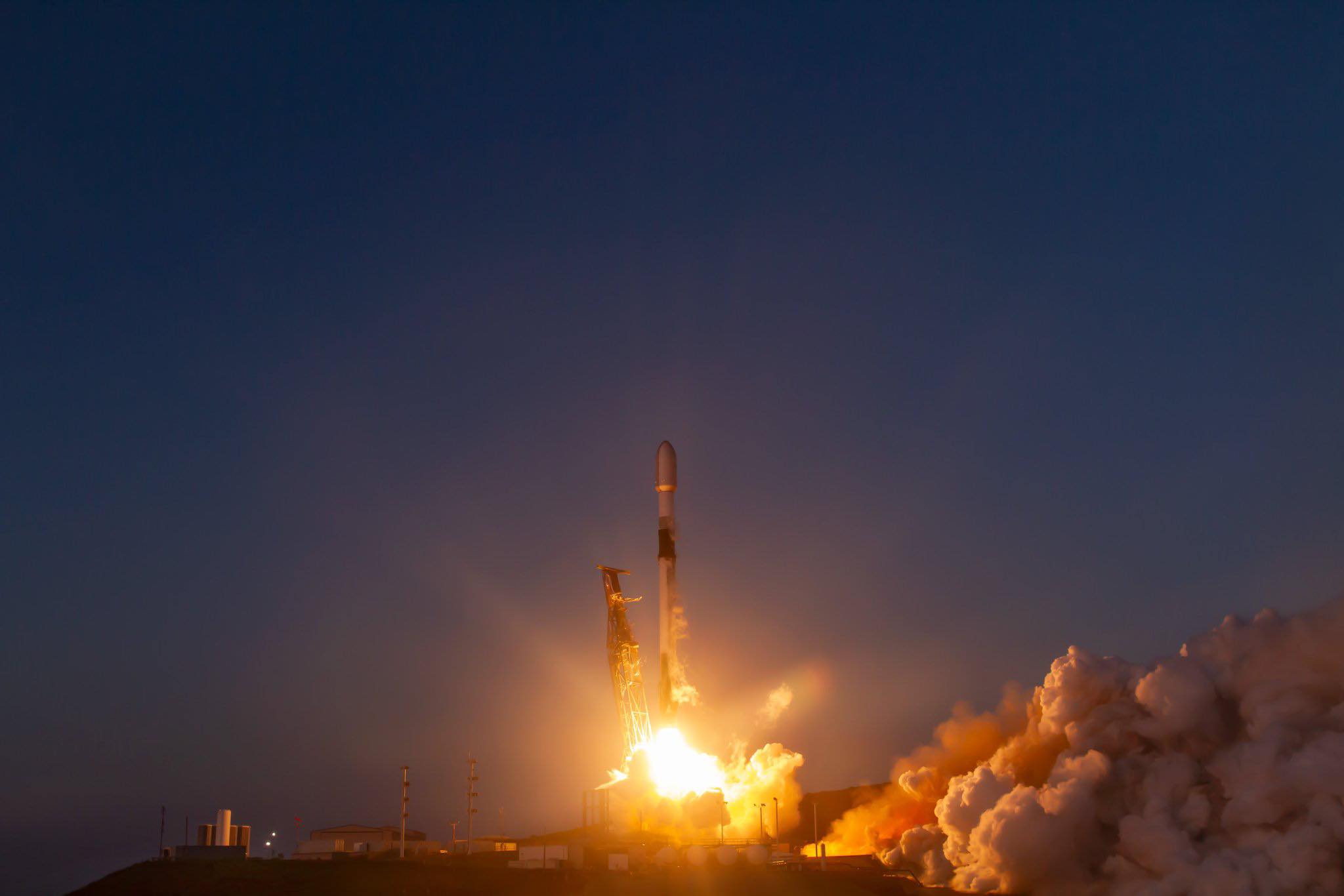
Following Saturday evening’s successful launch of an additional 21 Starlink low-orbiting internet communications satellites out of Vandenberg Space Force, Base, Calif.—the second Falcon 9 mission of the month from the mountain-ringed West Coast site inside April’s first week—SpaceX is aiming to close out a triple-header weekend by lofting the multi-customer Bandwagon-1 payload from the East Coast late Sunday. Since Friday, two boosters with more than 20 prior flights between them have delivered dozens of Starlinks uphill, with the upcoming Bandwagon-1 tasked to deploy 11 small spacecraft devoted to Earth observations, Signals Intelligence (SIGINT) and Internet of Things (IoT) functionality on behalf of the United States, Japan, India, South Korea and Australia.
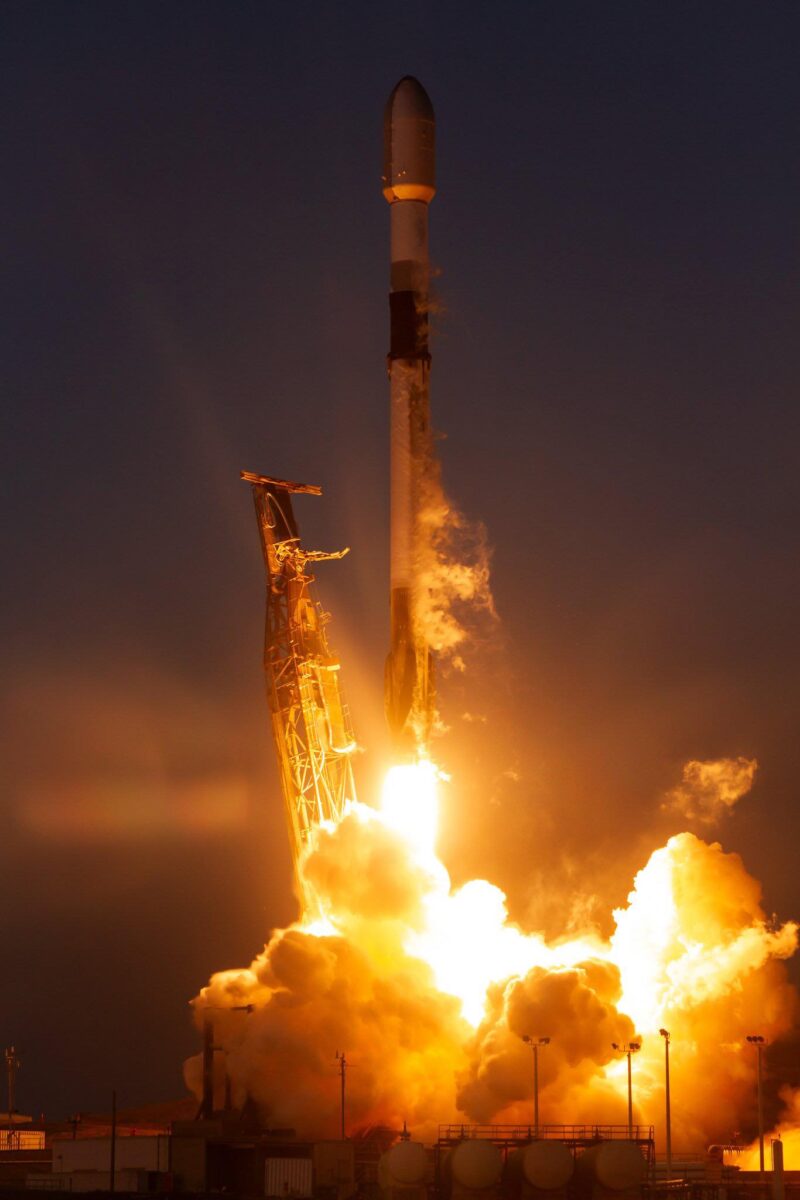
As previously detailed by AmericaSpace, the pre-weekend action began at 5:12 a.m. EDT Friday when the 14-times-used B1069 booster took flight from storied Space Launch Complex (SLC)-40 at Cape Canaveral Space Force Station. The dazzling pre-dawn light and fire show occurred right on the opening of a 58-minute “window”, thanks in no small part to near-perfect Space Coast weather, which had earlier pledged 90-percent favorability with only the smallest risk of violating thick cloud and liftoff winds rules.
Attention then shifted westwards to Space Launch Complex (SLC)-4E at Vandenberg, where the B1081 booster was being readied for her sixth mission in less than eight months. This vehicle came online for the first time last August to deliver Dragon Endurance and her Crew-7 quartet of NASA astronaut Jasmin Moghbeli, Denmark’s Andreas Mogensen of the European Space Agency (ESA), Satoshi Furukawa of the Japan Aerospace Exploration Agency (JAXA) and Russian cosmonaut Konstantin Borisov for their 6.5-month Expedition 69/70 increment at the International Space Station (ISS).
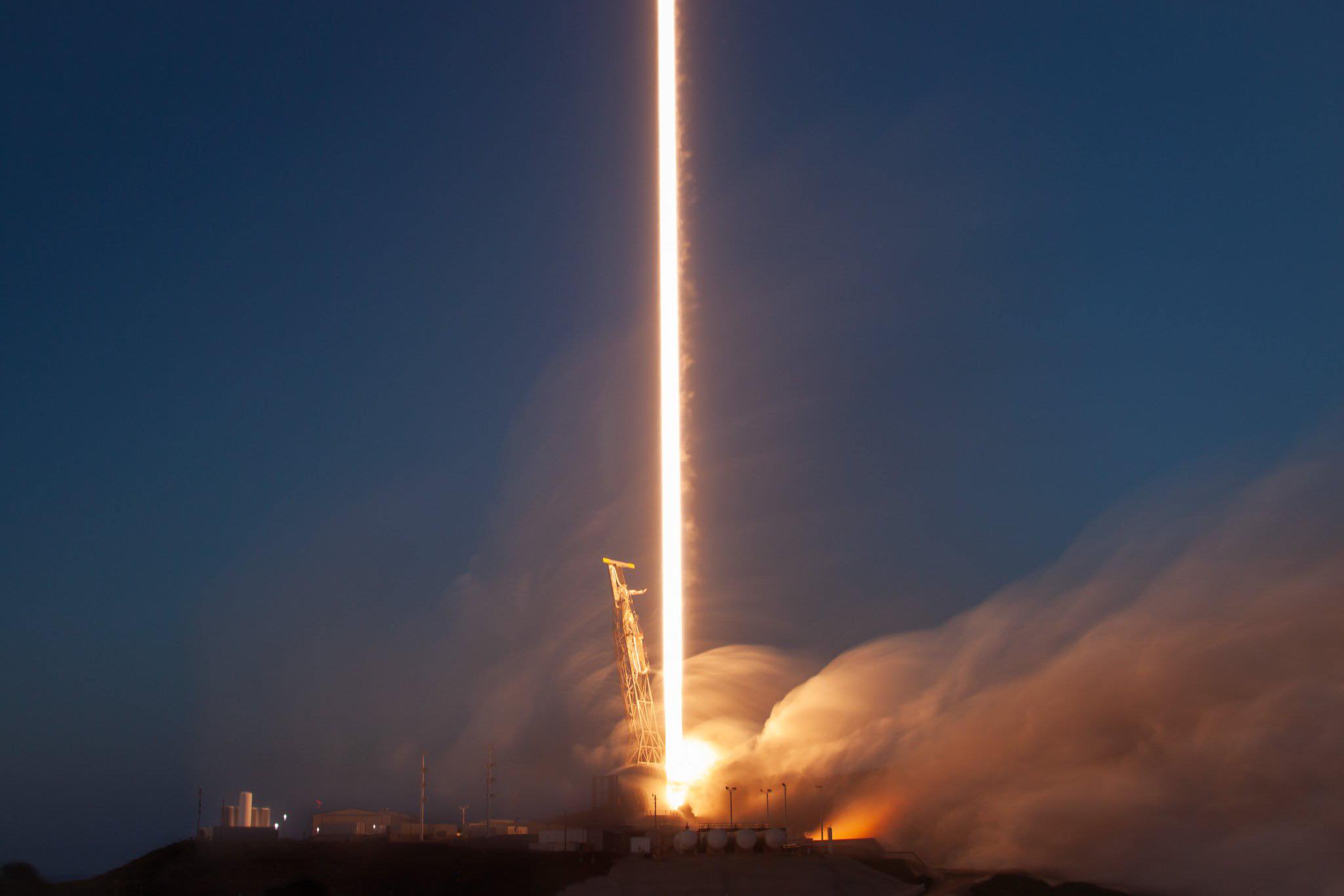
Two additional launches of B1081 last November and December delivered SpaceX’s CRS-29 Cargo Dragon for a month-long research stay at the station and a batch of Starlink satellites to orbit. More recently, in February she launched NASA’s $805 million Plankton, Aerosol, Cloud, Ocean Ecosystem (PACE) mission to perform critical measurements of our planet’s oceans, atmosphere and climate on a global scale and at the beginning of last month lofted the 53-payload Transporter-10 mission, setting a new launch-to-launch record for a single Falcon 9 in 2024 of 25 days, 15 hours and 32 minutes between flights, the fourth-fastest turnaround of any SpaceX booster to date.
B1081’s sixth liftoff—and her second from Vandenberg, having been moved from the East to the West Coast after completion of her PACE mission—was initially targeted for a four-hour “launch window” extending from 7:31 p.m. PDT through 11:25 p.m. PDT Friday, before being stood down for 24 hours. “Standing down from tonight’s Falcon 9 launch,” SpaceX tweeted after Friday’s called-off attempt, “due to unfavorable weather.”
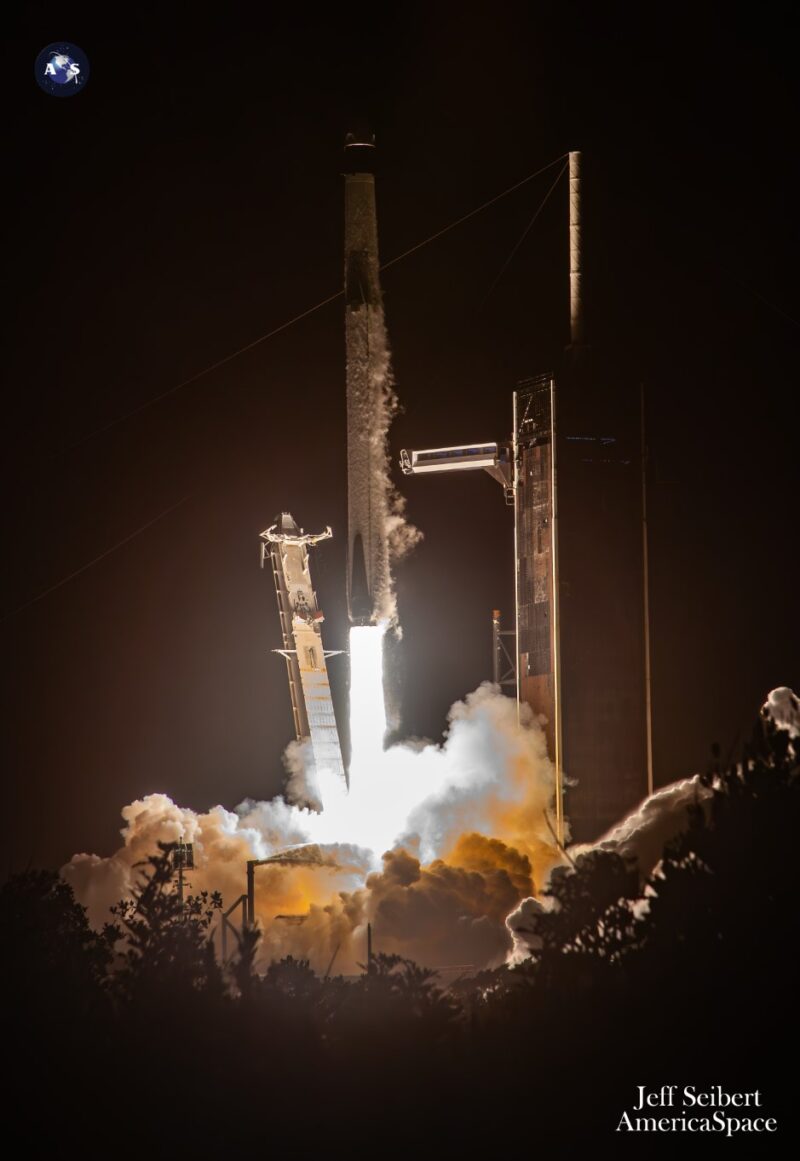
Teams realigned for a backup opportunity, which also offered an expansive plate of T-0 points opening at 7:25 p.m. PDT and closing at 11:17 p.m. PDT Saturday. And last night’s attempt proved charmed, as B1081 roared into the darkened Vandenberg sky right on the opening of the window to lift her 21-strong Starlink stack to orbit.
The first stage core separated at 2.5 minutes into ascent and returned to a pinpoint landing on the deck of the Autonomous Spaceport Drone Ship (ASDS), “Of Course I Still Love You”, which has been situated offshore in the Pacific Ocean since the middle of last week. Meanwhile, the Falcon 9’s second stage picked up the baton with a six-minute-long “burn” to deliver the Starlinks to orbital altitude and deployment was confirmed at 62 minutes and 28 seconds into the mission.
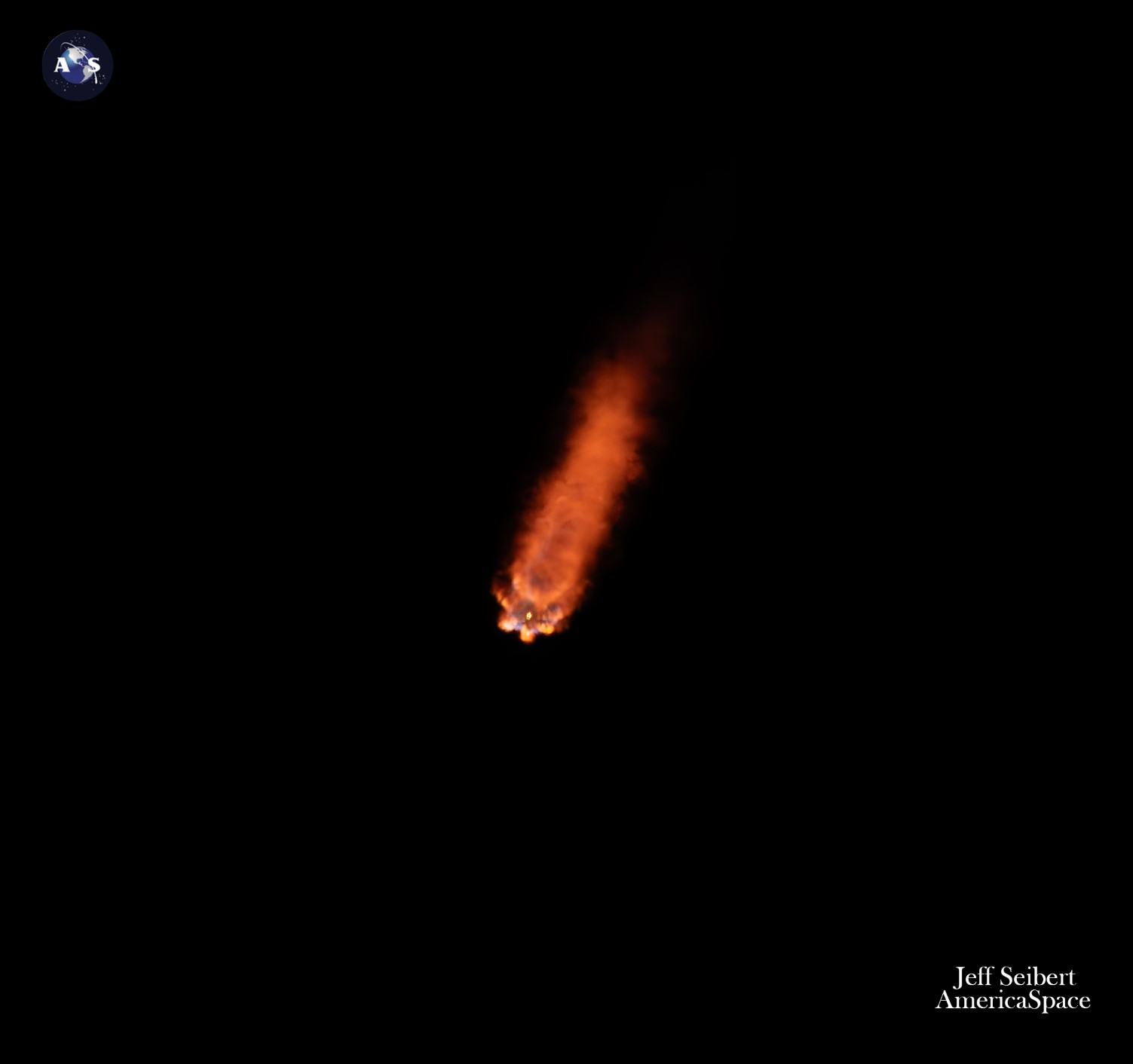
Last night’s launch brings to more than 500 the total number of Starlinks launched since the start of 2024 and well past 6,100 of these flat-packed internet-providing birds have been lifted by 22 reusable booster cores on over 150 dedicated Falcon 9 missions since May 2019. As a network, Starlink enables high-speed and low-latency internet provision to over 70 sovereign nations and international markets in North and South America, Europe, Asia, Oceania and Africa. Landlocked Eswatini—formerly Swaziland—in southern Africa and Honduras and Paraguay joined Starlink in December and SpaceX revealed that network availability was extended to Argentina and Mongolia in March 2024.
The downsized V2 Mini satellites, first flown in February of last year, boast three to four times greater “usable” bandwidth than earlier Starlink iterations. “V2 Minis include key technologies—such as more powerful phased-array antennas and the use of E-Band for backhaul—which will allow Starlink to provide 4x more capacity per satellite than earlier iterations,” SpaceX explained. “Among other enhancements, V2 Minis are equipped with new argon Hall thrusters for on-orbit maneuvering.”

Florida-based intercity operator Brightline adopted Starlink on its trains in 2023, the first passenger rail service in the world to do so. Additionally, El Salvador’s Ministry of Education has begun integrating Starlink capability into its schools to help close the digital divide between urban and remote rural communities and 50 Rwandan schools are now connected via Starlink’s high-speed internet service.
And in January, SpaceX lofted its first six “Direct-to-Cell” Starlinks, which permit mobile network providers to offer “seamless global access to texting, calling and browsing”, whether “on land, lakes or coastal waters”, without the need to change hardware or firmware. Within six days of that first launch, SpaceX engineers sent and received their first text messages via Direct-to-Cell and as of March Starlink reportedly has about 2.6 million registered subscribers or customers worldwide.
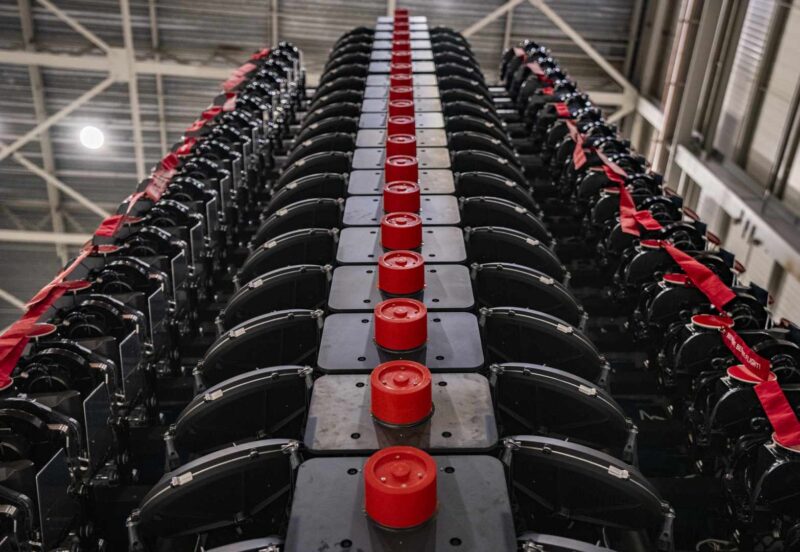
Notably, last night’s mission included six Direct-to-Cell Starlinks, which SpaceX touts as having the capacity to eliminate global deadzones. “The six with Direct-to-Cell capabilities have an advanced modem on board that will act as a cellphone tower in space,” it noted, “allowing network integration similar to a standard roaming partner.”
No sooner has the dust cleared from Friday’s pre-dawn and Saturday’s post-sunset launches, a third Falcon 9 booster is ready to fly as early as 7:16 p.m. EDT Sunday from historic Pad 39A at Florida’s Kennedy Space Center (KSC). Flying tonight is B1073, making her 14th launch and third flight of 2024, having previously supported the 300th SpaceX mission in January and helped cement new empirical records, set last month, for the shortest interval between a pair of launches and a trio of launches.
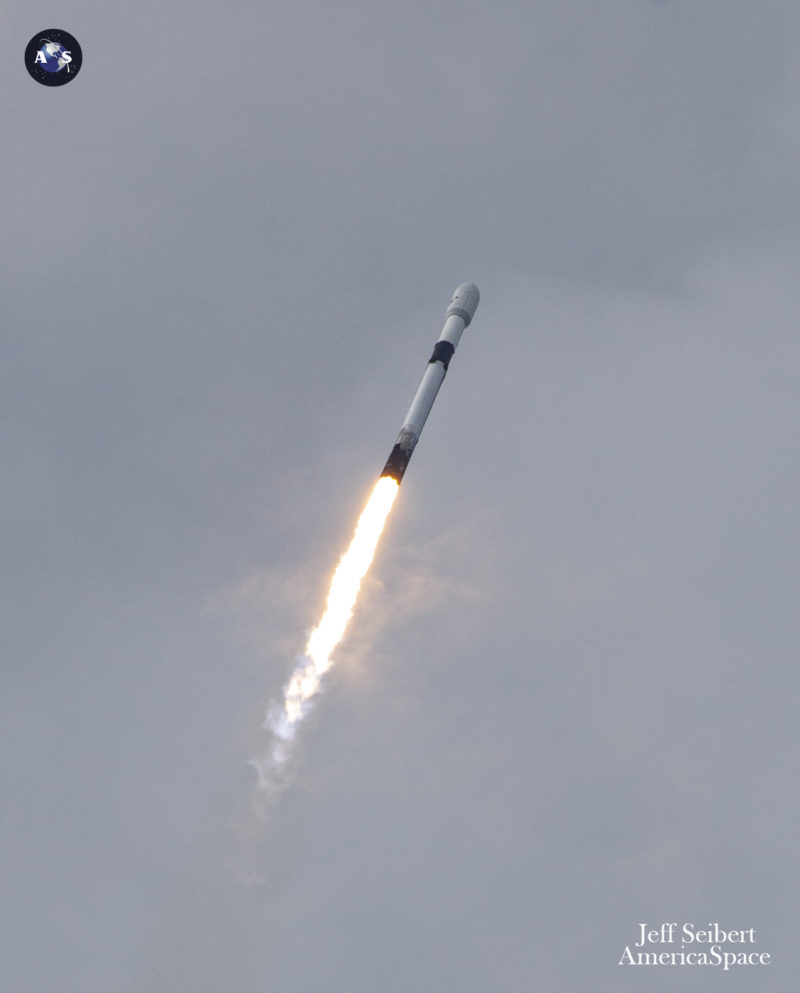
B1073 entered service back in May 2022 and her 13 previous flights have boosted more than 300 Starlinks uphill, as well as the SES-22 and Amazonas Nexus geostationary communications satellites in June 2022 and February of last year and launched a lunar-bound mission in December 2022 with Japan’s Hakuto-R Moon lander, the Rashid rover for the United Arab Emirates (UAE) and NASA’s water-ice-seeking Lunar Flashlight. In March of 2023, on the seventh mission of her stellar career, she became the most flight-seasoned Falcon 9 ever to lift a payload—whether human or cargo—to the International Space Station (ISS) with the CRS-27 Cargo Dragon.
Her forthcoming 14th launch will carry “Bandwagon-1”, which SpaceX outlined as a mission of 11 small spacecraft devoted to Earth observations, Signals Intelligence (SIGINT) and Internet of Things (IoT) functionality for customers from the United States, Japan, South Korea, India and Australia. Although multi-customer missions flew regularly in the past—with ten Transporter flights having lifted more than 830 smallsats, CubeSats and hosted payloads for over 50 sovereign nations between January 2021 and last month—Bandwagon-1 at first glance appears smaller in scope, at least in numbers.
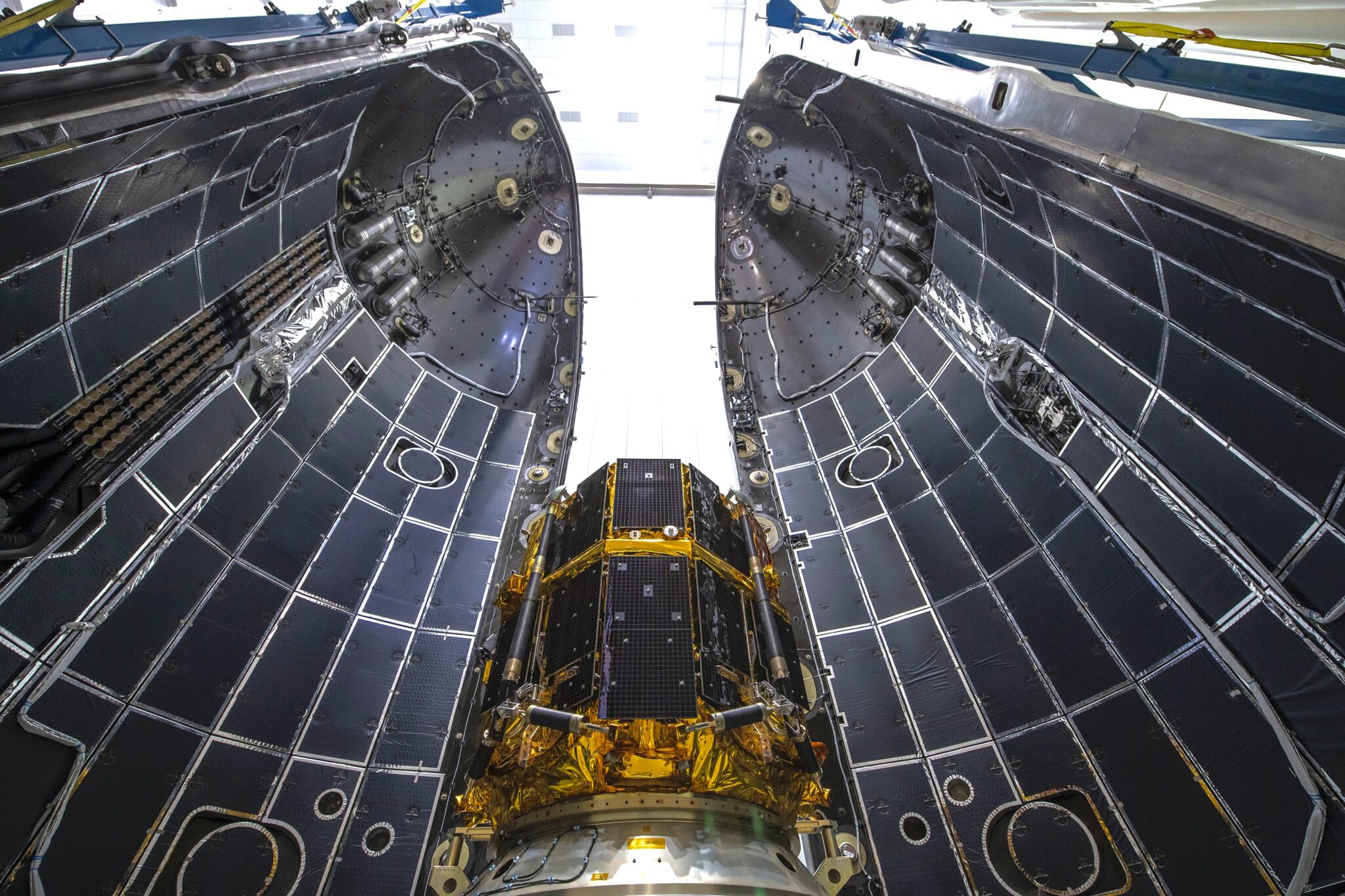
Targeting a 45-degree-inclined orbit, at an altitude of 340-370 miles (550-600 kilometers), more than half of the 11-strong Bandwagon-1 payload will be taken by Herndon, Va.-headquartered geospatial imaging firm HawkEye 360, which is flying its Clusters 8 and 9—six tiny Hawk satellites in total—in furtherance of monitoring Illegal, Unreported and Unregulated (IUU) fishing in the Indo-Pacific Region. Although 21 Hawks previously rode to orbit in seven three-satellite “batches” aboard RocketLab’s Electron rocket in January of last year and six Falcon 9 missions between December 2018 and April 2023, Bandwagon-1 marks the first occasion that as many as two clusters will have flown on a single booster.
“The launch of Clusters 8 and 9 underscores HawkEye 360’s commitment to consistently enhance our constellation to address the mission needs of our customers across the globe,” said HawkEye 360 President Rob Rainhart. “Through the dedication and ingenuity of our space team and partner Space Flight Laboratory (SFL), we are pleased to introduce significant upgrades to our satellite payloads that will further significantly expand our Radio Frequency (RF) data collection and processing capabilities.”
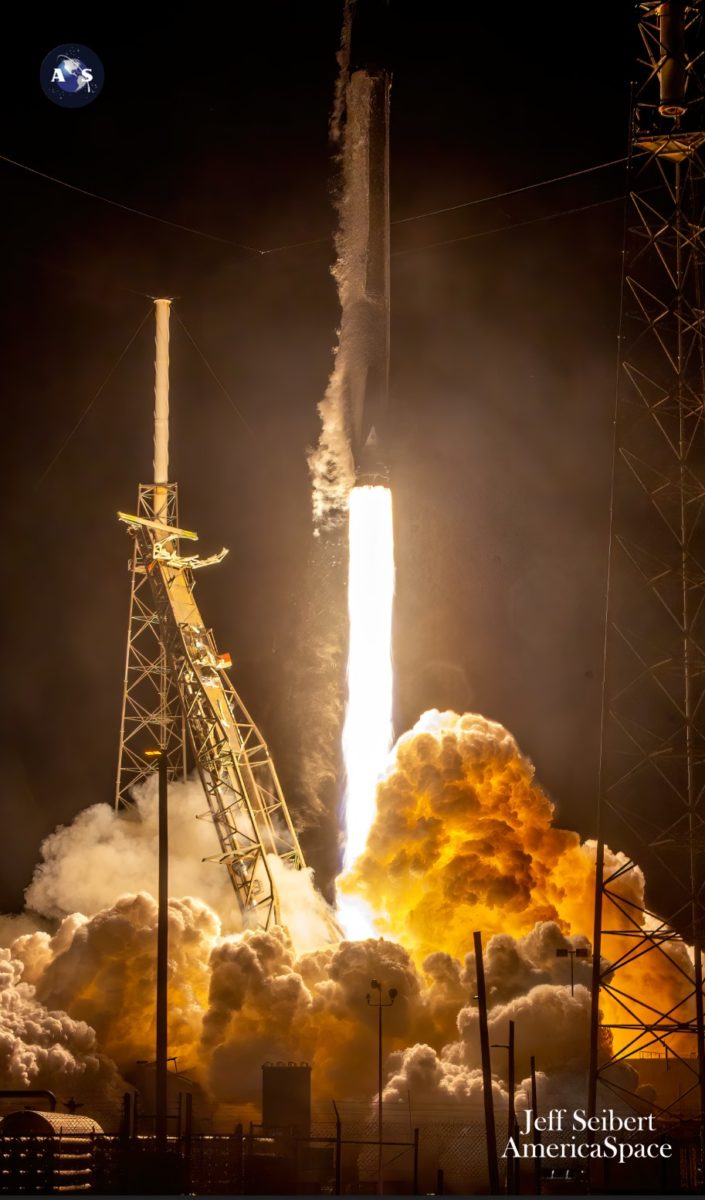
When Clusters 8 and 9 are injected into the mid-inclination orbits to cover the world’s busiest maritime traffic corridor, the Hawks’ upgraded sensitivities will enable a five-times-greater increase in data-gathering capacity, significantly larger bandwidths and multi-band signal collection. “Once Clusters 8 and 9 are in orbit,” noted HawkEye 360, “the constellation…will detect, characterize and geolocate RF signals from a broad range of emitters used for communications, navigation and security.”
The remainder of the Bandwagon-1 payload includes Capella-14, the latest in a series of powerful Synthetic Aperture Radar (SAR) smallsats built by San Francisco, Calif.-based Earth observation firm Capella Space. With previous Capellas lofted both by SpaceX and RocketLab’s Electron, this will be the eighth of these satellites to be lifted to orbit by a Falcon 9 after earlier launches between December 2018 and January 2022.
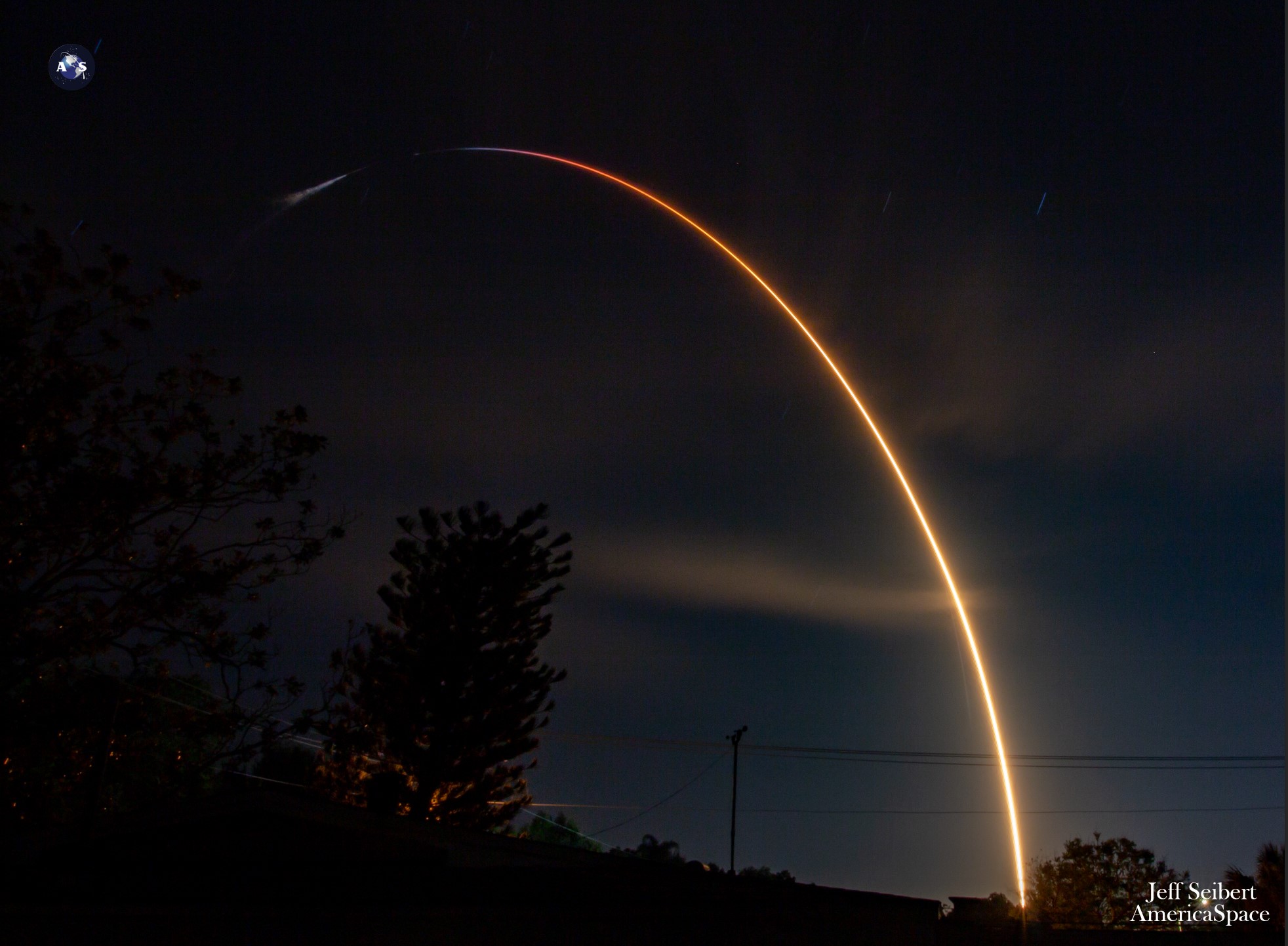
Destined for insertion into a 53-degree-inclined orbit, Capella 14 forms part of Capella Space’s next-generation “Acadia” network, which benefit from improved radar bandwidth from 500-700 MHz and better resolution, higher-quality imaging and shorter times between customer orders and delivery. The newer Acadia satellites, the first of which launched last August, are also equipped with Optical Communication Terminals (OCTs) to make Capella Space the first commercial SAR firm to demonstrate optical inter-satellite links.
Bandwagon-1’s four other payloads include Japan’s Tsukuyomi-II compact radar-imaging satellite, South Korea’s 425Sat reconnaissance satellite, India’s TSAT-1A military satellite and Tyvak International’s Centauri-6 Internet of Things (IoT) satellite.
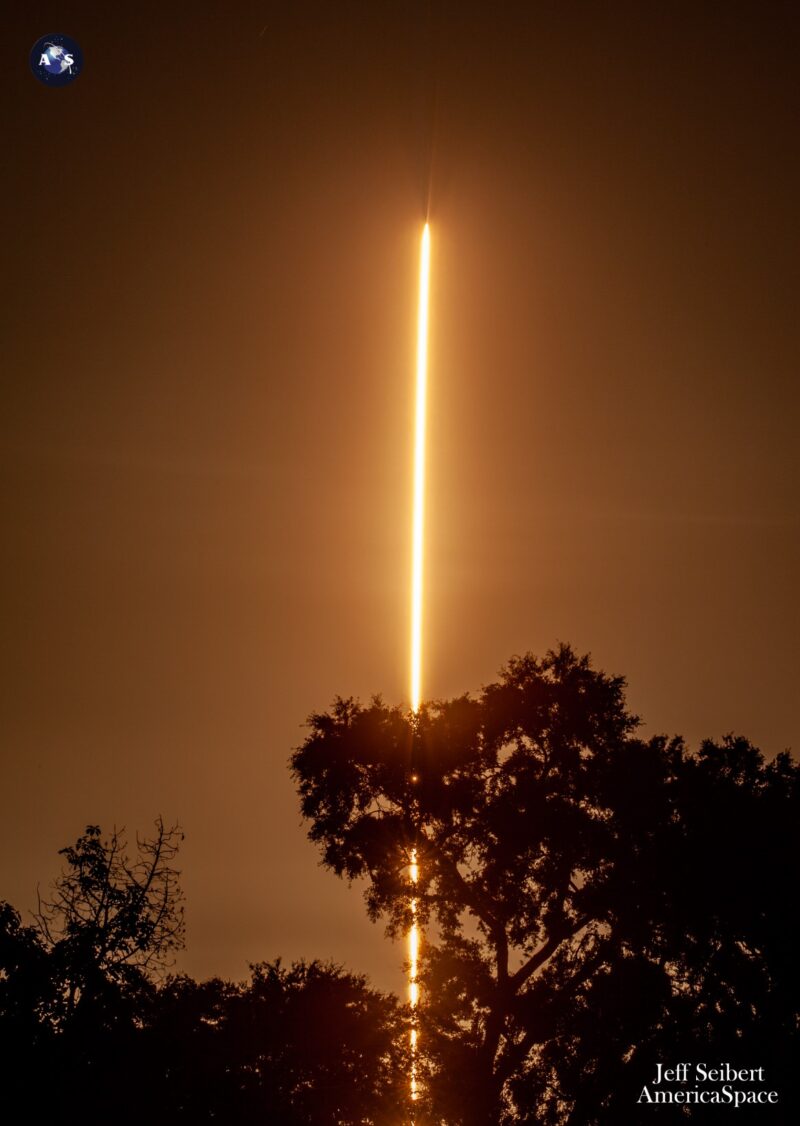
SpaceX is aiming for two launch windows for Bandwagon-1 on Sunday and Monday nights, both opening at 7:16 p.m. EDT. Weather conditions for both attempts look around 95-percent-favorable, tempered a risk of violating the Thick Cloud Rule tonight and potentially the Cumulus Cloud Rule on Monday evening.
“A surface high-pressure center will drape over the Carolina-Georgia coastline by the primary launch window, causing light northeasterly winds and benign weather conditions,” noted the 45th Weather Squadron at Patrick Space Force Base in its L-1 synopsis for Sunday. “A broken deck of upper-level cirrus may cause a Thick Cloud Layer violation, should it dip down to the -20-degrees Celsius (-4 degrees Fahrenheit) altitude.
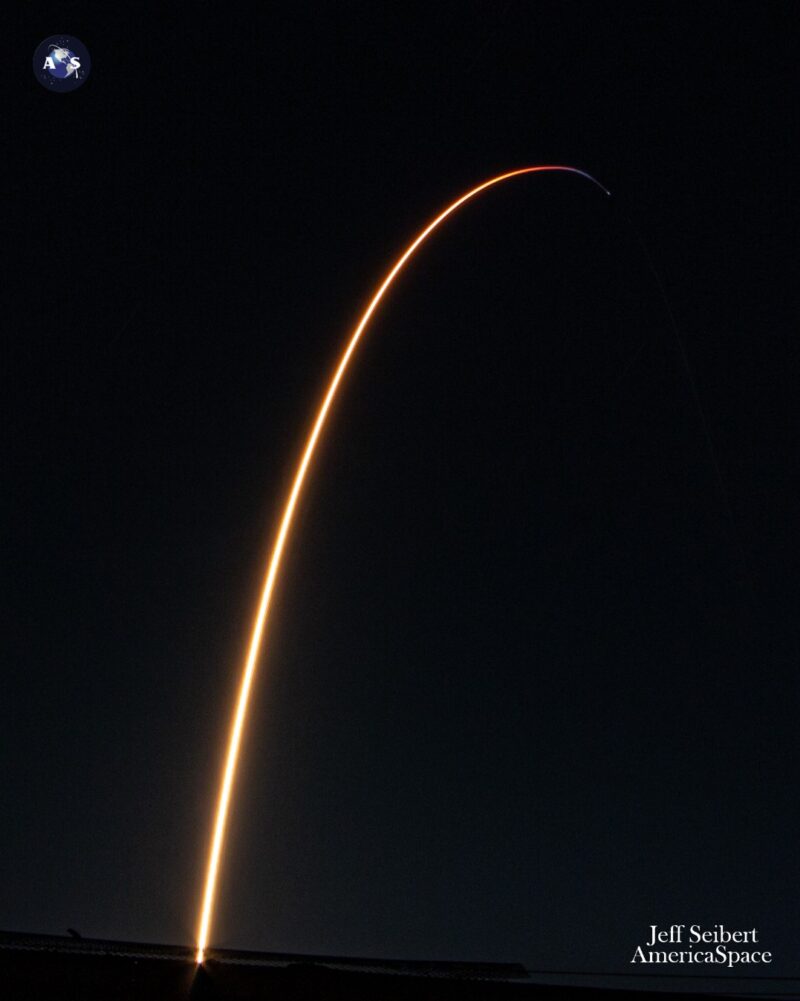
“For the backup day, wind speeds increase slightly and become more easterly, creating a small chance for a Cumulus Cloud Rule violation with onshore flow,” it was added. All told, the 45th anticipates a “very favorable” outlook for both the primary and backup windows, including good conditions for the recovery of B1073 itself, which is aiming for a Return to Launch Site (RTLS) and touchdown on Landing Zone (LZ)-1 at the Cape.





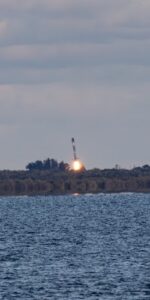
3 Comments
Leave a Reply3 Pings & Trackbacks
Pingback:SpaceX Sets Sights on Weekend Triple-Header Launches - Space Holics
Pingback:SpaceX Completes Weekend Triple-Header, Launches 11-Payload Bandwagon-1 Stack - AmericaSpace
Pingback:SpaceX Launches Next-Generation Environmental Monitoring Satellite to Orbit - SPACERFIT